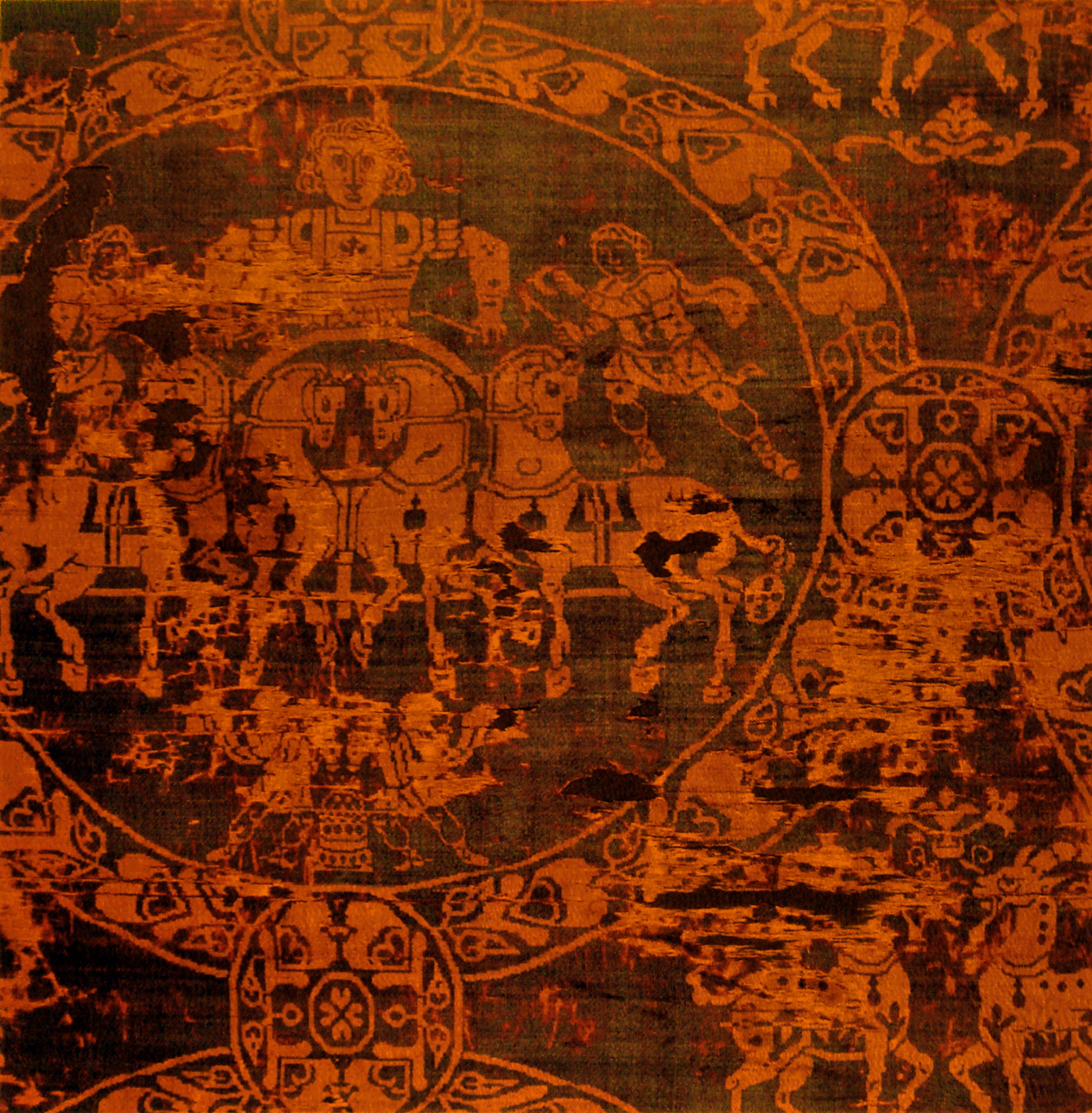Monozigote, CC BY-SA 4.0, via Wikimedia Commons
Monozigote, CC BY-SA 4.0, via Wikimedia Commons

Shroud usually refers to an item, such as a cloth, that covers or protects some other object. The term is most often used in reference to burial sheets, mound shroud, grave clothes, winding-cloths or winding-sheets, such as the famous Shroud of Turin or Tachrichim (burial shrouds) that Jews are dressed in for burial. Traditionally, mound shrouds are made of white cotton, wool or linen, though any material can be used so long as it is made of natural fibre. Intermixture of two or more such fibres is forbidden, a proscription that ultimately derives from the Torah, viz., Deut. 22:11.
A traditional Orthodox Jewish shroud consists of a tunic; a hood; pants that are extra-long and sewn shut at the bottom, so that separate foot coverings are not required; and a belt, which is tied in a knot shaped like the Hebrew letter shin, mnemonic of one of God’s names, Shaddai. Early shrouds incorporated a cloth, the sudarium, that covered the face, as depicted in traditional artistic representations of the entombed Jesus or His friend, Lazarus (John 11, q.v.). An especially pious man may next be enwrapped in either his kittel or his tallit, one tassel of which is defaced to render the garment ritually unfit, symbolizing the fact that the decedent is free from the stringent requirements of the 613 mitzvot (commandments). The shrouded body is wrapped in a winding sheet, termed a sovev in Hebrew (a cognate of svivon, the spinning Hanukkah toy that is familiar under its Yiddish name, dreidel), before being placed either in a plain coffin of soft wood (where required by governing health codes) or directly in the earth. Croesus-rich or dirt-poor, every Orthodox Jew is dressed to face the Almighty on the same terms.
The Early Christian Church also strongly encouraged the use of winding-sheets, except for monarchs and bishops. The rich were wrapped in cerecloths, which are fine fabrics soaked or painted in wax to hold the fabric close to the flesh. An account of the opening of the coffin of Edward I says that the “innermost covering seems to have been a very fine linen cerecloth, dressed close to every part of the body”. Their use was general until at least the Renaissance – clothes were very expensive, and they had the advantage that a good set of clothes was not lost to the family.
In Europe in the Middle Ages, coarse linen shrouds were used to bury most poor without a coffin. In poetry shrouds have been described as of sable, and they were later embroidered in black, becoming more elaborate and cut like shirts or shifts.
Orthodox Christians still use a burial shroud, usually decorated with a cross and the Trisagion. The special shroud that is used during the Orthodox Holy Week services is called an Epitaphios. Some Catholics also use the burial shroud particularly the Eastern Catholics and traditionalist Roman Catholics.
There has been, in the past, controversy over the legitimacy of the data from the Shroud investigation. This is really no surprise, as there had been a fire in the middle ages and a reweaving of some of the material so naturally, wherever the sample was taken from, is going to affect the end result.
As a quote from the article states: “The subsequent examination of the data by the Franco/Italian team found evidence, now published in Oxford University’s Archaeometry, which suggests that the methods employed by the 1988 scientists were flawed.”
The original article is here, click here to read it.
There is an acronym in the computer world called GIGO. GIGO means Garbage In, Garbage Out. Perhaps there should be a new acronym named TITO, Truth In, Truth Out. If the original samples are taken from the original cloth, and not repairs, it will bring more truthful results instead of skewed results.
This is the problem in today’s world with surveys, tests, and scientific data. If a scientist is determined to disprove something, all that is needed is to take the wrong sample to get the wrong result.
Too often in today’s world, whether in science or politics, the original sample is gamed to create a certain result. On that note, I was in a potential jury pool once. Both attorneys could ask questions of the potential jury members. Out of a large room of people there were not able to find 12 people that suited them. Apparently, they were fishing for people who would bring the verdict they wanted. They were not able to find their jury that day, but that’s a lot like this problem with the Shroud.
Scientists who don’t want to believe in Jesus don’t want evidence that proves them wrong. So they take a faulty sample and examine that instead.
What was flawed was that there had been a fire in the Middle Ages. The Shroud had been damaged and repaired. So samples were taken from the Middle Ages repair job and thus dated back to that time. Of course, that was flawed data!